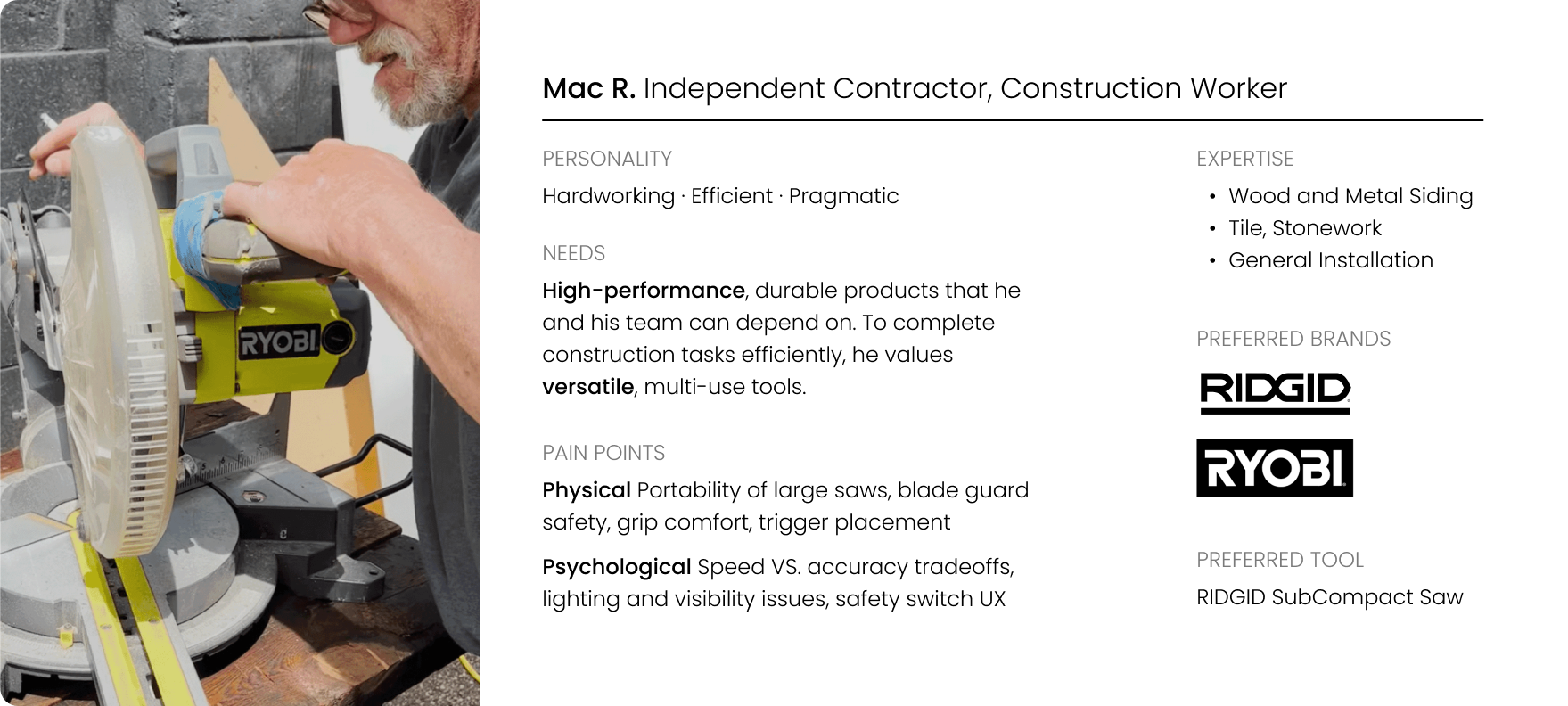
FESTOOL DEXTRO
A student project exploring the visual brand language of FESTOOL, resulting in a multi-material specialty saw for professional craftspeople.
Role
Student Product Design Project
TOOLS
Fusion360, Blender, Adobe CC
TIMELINE
12 Weeks, Summer 2024
Brand alignment Learn how to analyze and design within an existing visual brand language (VBL).
Product design Design a line extension for an existing power tool brand using qualitative and quantitative research.
User Research Interviewing handheld power tool users, user experience mapping to identify pain points.
Brand Research Studying the FESTOOL visual brand language, identifying FESTOOL enthusiast’s needs, and analyzing the existing FESTOOL product catalog for opportunity areas.
Market Research Locating opportunity areas by comparing competitor products







FESTOOL has an active forum where enthusiasts discuss their experience with FESTOOL products.
Using insights from immersive research, forum enthusiasts were surveyed (qualitative and quantitative) about their tool collection, FESTOOL brand perception, and experience with FESTOOL products. Of 11 survey respondents:

Visiting the workshop of a FESTOOL enthusiast allowed for hands on experience with 25+ FESTOOL products.
Key takeaways Workflow overviews per tool, grip placement logic, user ergonomic concerns, feature requests






This research was done collaboratively with Zoe Hong, Gabriella Gibson, and Duy Nguyen. Photos by Duy Nguyen.
Research on the FESTOOL product catalog shows the lack of a versatile, compact handheld cutting implement, which would be solved with the inclusion of a subcompact circular saw.
The subcompact handheld circular saw (SHCS) is available from both notable (Makita, DEWALT, Milwaukee, RIDGID) and generic brands. Market research revealed the lack of a professional grade, sleek version of this device, presenting an opportunity for brands such as FESTOOL.





Early models were rough blockouts with focus on silhouette and internal and external component position.
Later models focused on surface transitions, user touchpoints, and other fine details.




as a role-play prototype in ergonomics validation.
to analyze how light interacts with the surfacing in real life.
as a visual aid when presenting the product to final critique






Qualitative research methodologies, and how to analyze and display findings
Construction and organizational techniques for complex, multi-part assemblies
How to prioritize/deprioritize tasks/features in order to meet a deadline/deliverable
